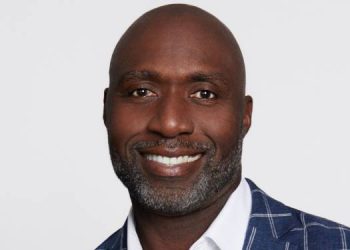
Public service broadcasters (PSBs) still account for more than half of broadcast TV viewing, Ofcom has found, and around three in four viewers are satisfied with their services.
Investment by PSBs in programmes on their public service channels appears to be stabilising after several years of decline and spending has increased on new factual programmes and original drama. However, spending on children’s shows, the arts and classical music and religion has continued to decline.
The findings are from Ofcom’s PSB Annual Research Report, published on Monday, which looks at how well the public service broadcasters – BBC, ITV, STV in Scotland, UTV in Northern Ireland, Channel 4, S4C in Wales and Channel 5 – delivered their public service remits during 2015.

The main five public service channels provided by PSB reached 84% of the TV population in a typical week, and accounted for 51% of all broadcast TV viewing in 2015. This share is similar to the last three years, but represents a decline from ten years ago when PSBs held a 70% share of viewing. When PSBs’ ‘portfolio’ channels – such as BBC Four, ITV2 or E4 – are included, their share of viewing was 71% in 2015.
Viewers under 25 yrs watching less TV: Overall, TV viewing has fallen in recent years, with viewers now watching 26 minutes less a day than in 2010. And, while the average person watched 3 hours and 36 minutes of TV per day in 2015, there is a widening generational gap in the viewing habits of the youngest and oldest audiences.
People under 25 are watching around a quarter less broadcast TV than in 2010, while the average viewing of those aged 55-64 has only declined by 5%.
Ofcom’s latest research has shown that 16-24s have particularly embraced on-demand services, and spend around a third of their daily viewing time watching free (e.g. BBC iPlayer, All 4, ITV player) or paid (e.g. Netflix, Amazon Video) on-demand services. Live TV accounts for 36% of daily viewing in this age group, a 14 percentage-point decrease in two years.
Spending and output
The PSBs spent £2.50bn on new UK programmes on their public service channels in 2015 — a 2% increase since 2013; the most recent comparable year due to the absence of major sporting events.
PSBs’ spending on new UK factual programmes rose by 8% to £522m, more than any other genre and the highest investment in this type of programme since 2008. They also spent more in 2015 on original UK drama (up 12% to £311m), and showed more of it – 416 hours, up from 371 hours.
However, the hours of original UK children’s programmes decreased in 2015 – from 672 in 2014 to 580. This was the first time fewer than 600 hours of original UK children’s programmes have been broadcast since 1998. Spending on this genre was £77m, 13% down on 2014.
The PSBs also spent less on new UK arts and classical music programmes in 2015 – £36m, down 14% from 2014 – as well as religion and ethics (down by 6% to £12m). Original UK comedy also decreased (by 4%, to £99m).
Audience attitudes
Audiences continue to value programmes from the public service broadcasters: 73% of viewers said they were satisfied with PSB public service broadcasting overall, while 7% were dissatisfied.
Credibilty and Quality rank high: Nearly nine in 10 (86%) viewers of public service channels cited trustworthy news programmes, and showing programmes of a high quality, as an important purpose of public service broadcasting. This was the most-cited purpose, followed by programmes that help viewers understand what is happening in the world (83%).
Nations and regions
The BBC, along with ITV, STV and UTV (the ‘Channel 3′ licence holders), spent a combined £270m on programmes specifically directed towards viewers in the particular nations and regions of the UK in 2015.
At least seven in ten regular viewers are satisfied with BBC One and Channel 3’s delivery of nations and regions news.
S4C spent £63m on original Welsh-language programmes in the 2015/16 financial year, a slight increase from the previous year.
Jane Rumble, Director of Market Intelligence at Ofcom said: “Our research shows that UK audiences still watch and value public service broadcasting. But there are significant differences in the viewing habits of older and younger audiences.
“As media and technology continue to evolve, it is important that broadcasters respond to these changes, so they can keep meeting the needs and expectations of viewers.”

















